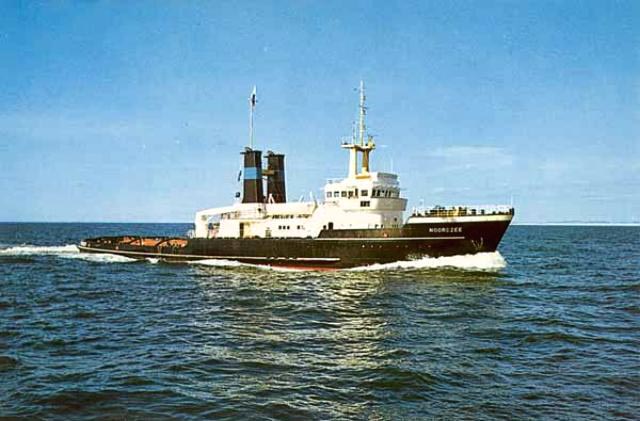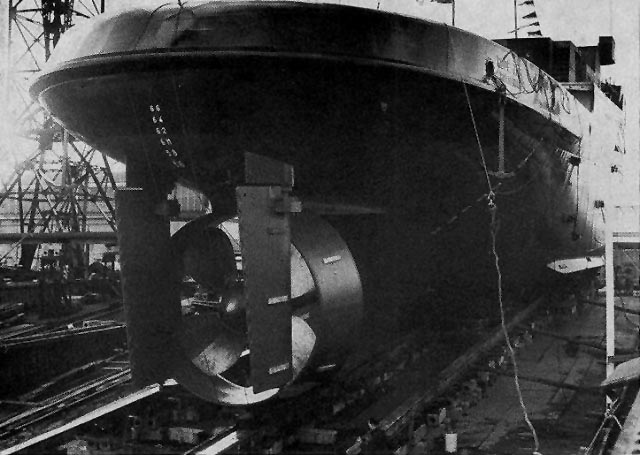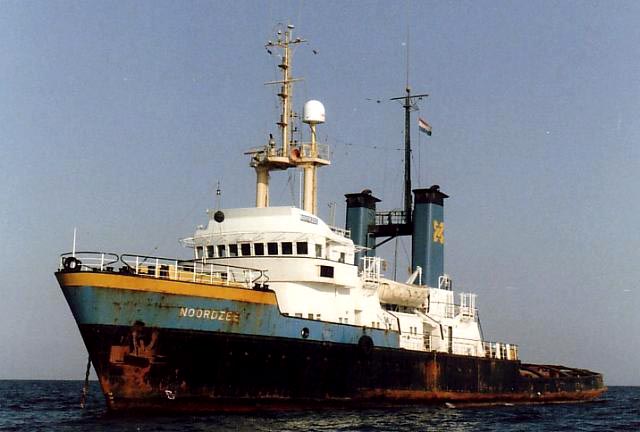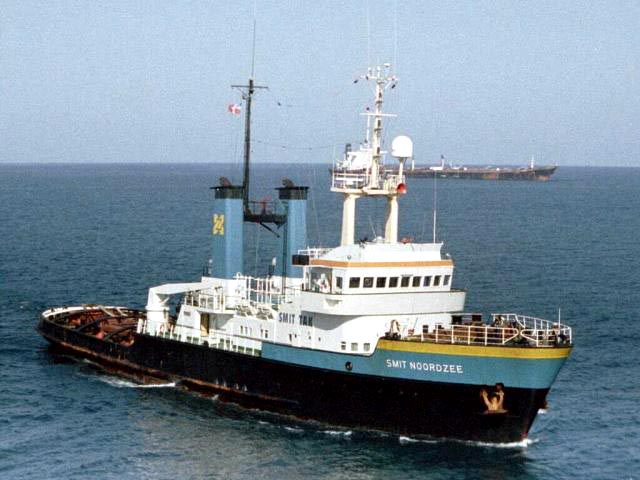
![]()
ms Noordzee
I do not have a particular memory about the commissioning of the radio equipment and the sea-trial of the ship, probably meaning that all was in hand and no big problems were encountered. A special item which had to be built into the radio console of all Smit tugs was the so called 'Greep-panel', which was delivered by the shore radio department of Smit at Maassluis, the company's home base. In essence it was a tape recorder panel which could be switched to all radio receivers. The design was by the head of this department by the name of Greep and soon the popular name for this unit became the 'Greep-panel'. When in a salvage operation it was used to tape the conversation between the tug's and distressed ship captains. Before the salvage or tow was started a contract was orally conducted. Taping such conversations often proved practical since some captains of ships to be salvaged or towed later developed bad memory or even a memory lapse about the agreed conditions, denying requests for help etc and so trying to avoid payment for the help provided.

The quality of this picture of the ms Noordzee leaves a bit to be desired but gives a good impression of this seagoing tug.
The ms Noordzee (IV) owned by Smit International was built in
1970 as number 599 by the Dutch Shipyard 'De Merwede' at Hardinxveld.
Gross tonnage: 1312
Propulsion: 2 x 6 cylinder Werkspoor diesel engines type 6TM410 number 2961 en
2962 - 11.000 Hp (5.148 kW). One screw with nozzle and twin rudders. See picture and explanation below of the advantages of such a nozzle.
Pulling strength: 90 tons
Speed: 15 knots
Dimensions: LxWxH: 68.50 x 12.10 x 6.40 m
1970 (11th March) ms NOORDZEE (4) Delivered to L.Smit & Co’s Internationale Sleepdienst Maatschappij N.V., or Smit International, Rotterdam.
1972 (24th April) ms NOORDZEE ownership was transferred to Smit Internationale Zeesleep–en Bergings Maatschappij N.V., Rotterdam.
1986 (5th February) Transferred to Smit–Tak Internationale Ltd., Nassau, Bahamas and renamed to SMIT NOORDZEE
1988 Transferred once more to DAFI Iran Marine Services Company (Smit TaK), Bandar Khomeini, Iran.
1991(May) The ship was badly damaged by fire.
1993 YAL Iran.

This picture shows the nozzle
as installed in the ms Noordzee. The majority of such nozzles, either fixed or steerable units, are fitted on tugs. The high bollard pulls being demanded by salvage, coastal towage and harbours tugs, makes the fitting of such nozzles essential, for to achieve the same bollard pull with an open propeller requires over 45% more power for the same propeller. The the light coloured white metal parts attached to the rudder and nozzle are probably part of the ship's self sacrificing cathodic protection system. This system protects a metal surface of corrosion. Because of the copper screw near the steel nozzle and rudders corrosion especially in this area can be dramatic.
A cross section of the nozzle has, in effect, the same shape as an aeroplane's wing but instead of 'lift', a forward thrust is produced. There is no increased thrust on the shafting, the extra thrust is passed through into the ship's hull via the nozzle. Another advantage for a tug is that a line cannot easily foul up the ship's screw by accident. Nothing more nightmarish for a tugboat's crew than to be run over by the towed vessel or object when the screw would get immobilised by such an incident.
Regarding cathodic protection systems it is may be useful to explain the two available systems:
Sacrificial Cathodic Protection: Voltage provided by sacrificial zinc or aluminium anodes is too high when new, causing high stress on new coatings and too low when aging, again causing corrosion as coating deteriorates. Another disadvantage of the sacrificial system is the limited life time, high reinstallation costs, high drag and fuel use. The advantage is the lower purchase costs as compared to the impressed current system where first time investment is relatively high. However, over the life time's span of a ship this system is more cost effective. Also the corrosion control is very superior to that of the sacrificial system.
Impressed Current Cathodic Protection: My company Radio Holland represented and sold the CAPAC impressed current cathodic protection system which is a much more sophisticated way of corrosion protection and all done automatically. This protection is provided at optimum ampere levels - too little and corrosion occurs, too much and coatings may be damaged. With ships, the optimum amount of amperes is always changing. Ampere requirements increase proportionately to ship speed, coating age, and oxygen content. The current provided by the system is automatically and continuously adjusted to meet changing conditions. Life time of the system exceeds 20 years.
CAPAC systems also feature a silver alloy slip band and silver graphite brushes to ensure the propeller and shaft are electrically bonded to the hull. Silver utilised on the contact surfaces provides a low-resistance electrical connection.

The picture shows a battle scarred tug 'Noordzee' while at anchor. Position unknown.

In February,1986 the 'Noordzee' was renamed 'Smit Noordzee' and was operated now by Smit Tak International Ocean Towage & Salvage Company Ltd. at Nassau, Bahamas.

A picture taken somewhere in the Persian Gulf presents a nice overview of the ship from above.